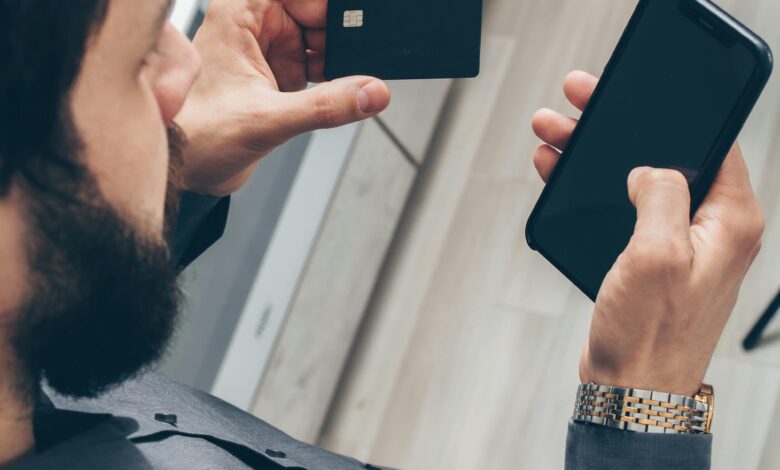How to Secure Your Mobile Devices from Cyber Threats: A Comprehensive Guide

In today’s digital age, mobile devices like smartphones and tablets are indispensable tools for communication, productivity, and entertainment. However, they also serve as prime targets for cybercriminals seeking to exploit vulnerabilities and steal sensitive information. From phishing scams to malware attacks, the risks are real and ever-evolving. To protect your personal data and ensure your device remains secure, it’s essential to adopt proactive measures. This guide outlines practical steps to safeguard your mobile devices from cyber threats.
Why Mobile Device Security Matters
Mobile devices store a wealth of sensitive information, including:
- Personal photos and videos
- Banking credentials and payment apps
- Email accounts and passwords
- Location data and contacts
A compromised device can lead to identity theft, financial loss, and unauthorized access to your private life. By implementing robust security practices, you can significantly reduce the risk of falling victim to cyberattacks.
Step 1: Use Strong Passwords and Biometric Authentication
One of the simplest yet most effective ways to secure your device is by using strong authentication methods.
A. Create Strong Passwords
- Avoid simple or predictable passwords like “123456” or “password.”
- Use a combination of uppercase and lowercase letters, numbers, and special characters.
- Consider using a password manager to generate and store complex passwords securely.
B. Enable Biometric Authentication
- Most modern devices support biometric features such as fingerprint scanning or facial recognition.
- These methods provide an additional layer of security while offering convenience.
C. Set Up Screen Lock Timeout
- Configure your device to lock automatically after a short period of inactivity (e.g., 30 seconds).
Step 2: Keep Your Device Updated
Software updates often include critical security patches that address known vulnerabilities. Ignoring updates leaves your device exposed to exploits.
A. Enable Automatic Updates
- Turn on automatic software updates for your operating system (iOS, Android) and installed apps.
- Regularly check for updates manually if automatic updates are unavailable.
B. Verify App Sources
- Download apps only from trusted sources like the Apple App Store or Google Play Store.
- Avoid sideloading apps from third-party websites, as they may contain malware.
Step 3: Install and Maintain Antivirus Software
While mobile operating systems are generally secure, antivirus software adds an extra layer of protection against malware and other threats.
A. Choose Reputable Antivirus Apps
- Popular options include Norton Mobile Security, McAfee Mobile Security, and Bitdefender Mobile Security.
- Look for features like real-time scanning, anti-theft tools, and web protection.
B. Run Regular Scans
- Schedule periodic scans to detect and remove potential threats.
Step 4: Be Cautious with Public Wi-Fi
Public Wi-Fi networks are convenient but often unsecured, making them a hotspot for cyberattacks.
A. Avoid Sensitive Transactions
- Refrain from accessing banking apps, entering passwords, or making online purchases while connected to public Wi-Fi.
B. Use a Virtual Private Network (VPN)
- A VPN encrypts your internet traffic, shielding it from prying eyes.
- Choose a reputable provider like NordVPN, ExpressVPN, or Surfshark.
C. Disable Wi-Fi and Bluetooth When Not in Use
- Leaving these features enabled can expose your device to unauthorized connections.
Step 5: Secure Your Accounts
Protecting your online accounts is crucial for overall device security.
A. Enable Two-Factor Authentication (2FA)
- Add an extra layer of security by requiring a second form of verification (e.g., a code sent to your phone) when logging into accounts.
B. Monitor Account Activity
- Regularly review login activity for signs of unauthorized access.
- Immediately change passwords if you suspect a breach.
C. Avoid Saving Passwords on Shared Devices
- If you use someone else’s device, avoid saving passwords or staying logged into accounts.
Step 6: Protect Against Phishing Attacks
Phishing scams trick users into revealing sensitive information through fake emails, texts, or websites.
A. Be Skeptical of Unsolicited Messages
- Avoid clicking links or downloading attachments from unknown senders.
- Verify the sender’s identity before responding to requests for personal information.
B. Use Anti-Phishing Tools
- Many browsers and security apps include anti-phishing features that block malicious websites.
C. Educate Yourself
- Familiarize yourself with common phishing tactics, such as urgent language or misspelled URLs.
Step 7: Back Up Your Data Regularly
Data loss can occur due to theft, damage, or ransomware attacks. Regular backups ensure you don’t lose valuable information.
A. Use Cloud Services
- Platforms like iCloud, Google Drive, or Dropbox offer secure storage solutions.
- Enable automatic backups to simplify the process.
B. Store Backups Locally
- Use external hard drives or USB sticks for offline backups, especially for highly sensitive data.
Step 8: Manage App Permissions
Apps often request permissions that go beyond their intended functionality, potentially compromising your privacy.
A. Review Permissions
- Go to your device settings and audit the permissions granted to each app.
- Revoke unnecessary permissions, such as access to your camera, microphone, or location.
B. Limit Background Activity
- Restrict apps from running in the background unless absolutely necessary.
Step 9: Encrypt Your Data
Encryption scrambles your data, making it unreadable to unauthorized users.
A. Enable Device Encryption
- Most modern devices have built-in encryption features. Ensure they are activated in your settings.
B. Use Encrypted Messaging Apps
- Apps like Signal and WhatsApp offer end-to-end encryption for secure communication.
Step 10: Prepare for Loss or Theft
Losing your device can be devastating, but taking preventive measures minimizes the damage.
A. Enable Remote Tracking and Wiping
- Use services like Find My iPhone (iOS) or Find My Device (Android) to locate your device remotely.
- Enable remote wipe functionality to erase data if recovery isn’t possible.
B. Label Your Device
- Include contact information on your lock screen so honest finders can return it.
Common Mistakes to Avoid
To maximize your device’s security, avoid these common errors:
- Ignoring Software Updates : Outdated software is vulnerable to attacks.
- Using Public Charging Stations : Malicious chargers can install malware. Carry a portable power bank instead.
- Sharing Too Much Information : Be cautious about posting personal details on social media.
- Disabling Security Features : Turning off firewalls, antivirus, or encryption weakens your defenses.




